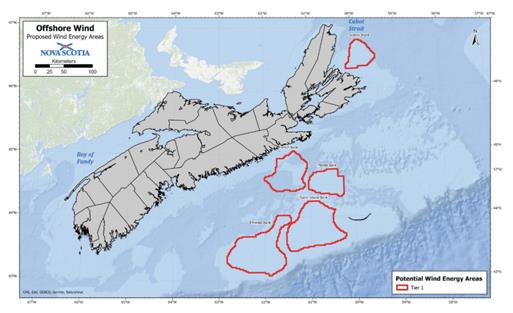Wind West will not make Nova Scotia an energy superpower
Larry Hughes
AllNovaScotia.com
16 June 2025
Recent articles in AllNovaScotia.com on the Wind West project understate it enormity.
The Premier's Wind West project, one of Nova Scotia's projects in the "national interest", envisages the development of 66 gigawatts of capacity of offshore wind turbines supplying electricity to other provinces by some unspecified date in the future.
66 gigawatts is slightly more than 13 times the Premier's five gigawatts of offshore wind promised in 2022.
Not only does the 66 gigawatts exceed the total offshore wind capacity of all other countries (China has 37 gigawatts), but it also exceeds the expected annual growth in global offshore wind from now until 2032.
If each turbine has a capacity of between 10 and 15 megawatts, the Wind West project will require between 4,400 and 6,600 turbines.
According to the Premier, the 66 gigawatts turbines will "reliably" produce 40 gigawatts, implying a capacity factor of 61% (a value which is considered a high estimate for today's offshore wind farms).
If the 66 gigawatts of wind turbines can operate at 61% capacity factor over a year, they will produce about 350 terawatt-hours of electricity (40 gigawatts multiplied by 8,760 hours per year).
So?
In 2023, Canada's total generating capacity (hydroelectric stations, nuclear power plants, coal, oil, and natural gas generation, and new renewables [i.e., wind and solar]) was 153 gigawatts.
The Premier's proposed 66 gigawatts of offshore wind is 43% of Canada's total capacity. If the 40 gigawatts of "reliable" capacity is used instead, the proposed offshore is 26% of Canada's total capacity.
In 2024, Canada's total electrical generation in all provinces and territories was about 610 terawatt-hours.
If the Premier's proposed 66 gigawatts of offshore wind were able to produce 350 terawatt-hours, it would be 57% of Canada's total generation in 2024.
(The Premier's claim that Wind West could meet 27% of Canada's electricity demand appears to be a misunderstanding of the difference between capacity and generation.)
If it was realized, the Wind West project would undoubtedly help vault Canada into the ranks of a green-energy superpower.
However, the Wind West project could still face a mountain of challenges, as shown by the difficulty in selecting offshore "wind energy areas" that are environmentally, economically, and technically acceptable for the Premier's proposed five-gigawatts of offshore wind leases.
Moreover, the risks of climate change to offshore wind projects can no longer be ignored with the threat of more extreme weather events, such as hurricanes, and the warming Arctic producing more icebergs.
Nova Scotia is a small province with a long history of politicians overpromising "game-changing" energy projects that, in the end, prove to be underwhelming.
Wind West is destined to be another.
